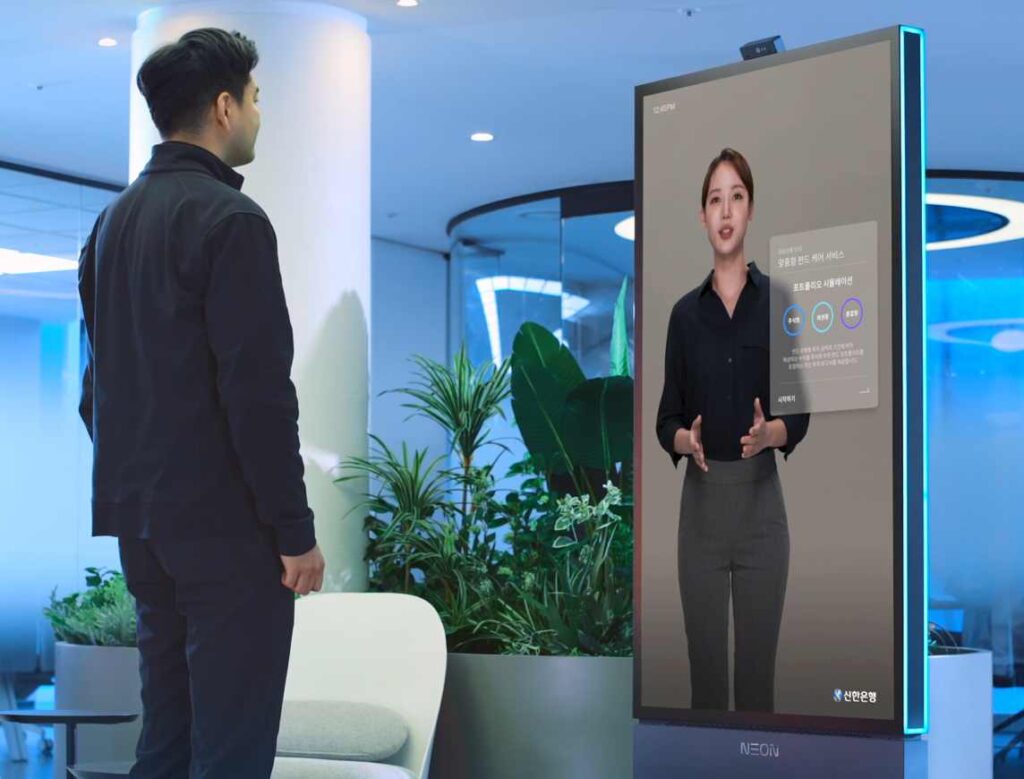Above: JH Han, President of Visual Display Business announces the development of a virtual avatar for sign language on Samsung TVs.
BitDepth#1285 for January 21, 2021
With many announcements across its product line for virtual CES 2021, Samsung saved its big announcement for last, revealing the new S21 series of Galaxy smartphones.
While the new phones are impressive, adding a second telephoto lens, larger capture sizes and compatibility with the SPen stylus from its Note series, the big news from Samsung happened elsewhere at CES, squeezed into new product announcements for its line of televisions.
At the company’s First Look event for CES, Laura Kang of the company’s Product Innovation Lab got things warmed up with a cute introduction to the company’s newest upcycling project, cardboard sculptures that buyers of its large screen televisions can build from the packaging.
It’s another notch of sustainability, a recurring theme for Samsung’s presence at this year’s online CES, as the company placed an emphasis on adding features that extend the usable life of its products.
The company’s new televisions will also be controlled by a remote made from recycled plastics that recharges with solar energy.
The new remote is also dramatically simplified, using fewer buttons to make the television’s controls more accessible to users with disabilities.
The new television features target users who are blind, have low vision, are hard of hearing or are deaf.
Remotes can be set up in a teaching mode, giving audible feedback to users as they press buttons and learn how to operate the television.
Samsung has been working on accessibility features with the Royal National Institute of Blind People for years and has collaboratively developed these assistive features.
If an Electronic Programme Guide is available on the channel, the television can be set to announce that information audibly, allowing a listener to know which channel is active.
Audio can be split to provide assistive audio for headphones while allowing the standard audio signal to be sent to the speakers, making it possible for listeners with different needs to share the same content.
If the show has an Audio Description (AD) channel available, that information can be read aloud, allowing someone with limited sight to hear a description of what is being broadcast or streamed.
The overall number of shows with AD is limited, but several popular series, including NCIS, Law and Order and SpongeBob Squarepants embed the option in their signal.
Some Netflix content is available with an AD channel.
Audio can be split to provide assistive audio for headphones while allowing the standard audio signal to be sent to the speakers, making it possible for listeners with different needs to share the same content.
The new televisions add these services to existing visual enhancement options such as grayscale, high contrast and inversion modes and the See Colors app, which allows spectrum-defined boosting of colour to help users with colour deficient sight see colours with a profile that suits their visual range.
Captions can now be moved around on the screens and if sign language boxes are present, they can be zoomed up to 200 per cent to sit side by side with the broadcast, making the gestures and expression of the interpreter easier to see.
Even more intriguing is what the Samsung plans to add to the devices, including automatic caption generation and technology that allows an attached camera on the television to read gestures, allowing the viewer to control the device using sign language.
The company also will introduce automated caption generation and a cartoon-style sign language avatar; a technology that’s been actively pursued since 2016.
Storysign, a collaboration between Huawei, the European Union for the Deaf, Penguin Random House and Aardman Animations was an AI powered app that could read text captured by a smartphone camera and translate it into gestures signed by an animated avatar.
Samsung previously announced humanoid avatars under the brand Neon at CES in 2020.
The only surprising thing about these announcements is how supremely low-keyed they have been about all this work. Samsung hardly mentions them on its website outside of a few scattered press releases about its work with assistive tech that provided background for this column.
But it’s big news for an audience starved for technology that acknowledges differences in their available senses.
If Samsung brings these new technologies to its new televisions as a comprehensive suite of assistive features powered by AI, it could represent a mainstream breakthrough for the technology and a decisive addition to its arsenal of disability assistance tools for all its screen-based devices.



